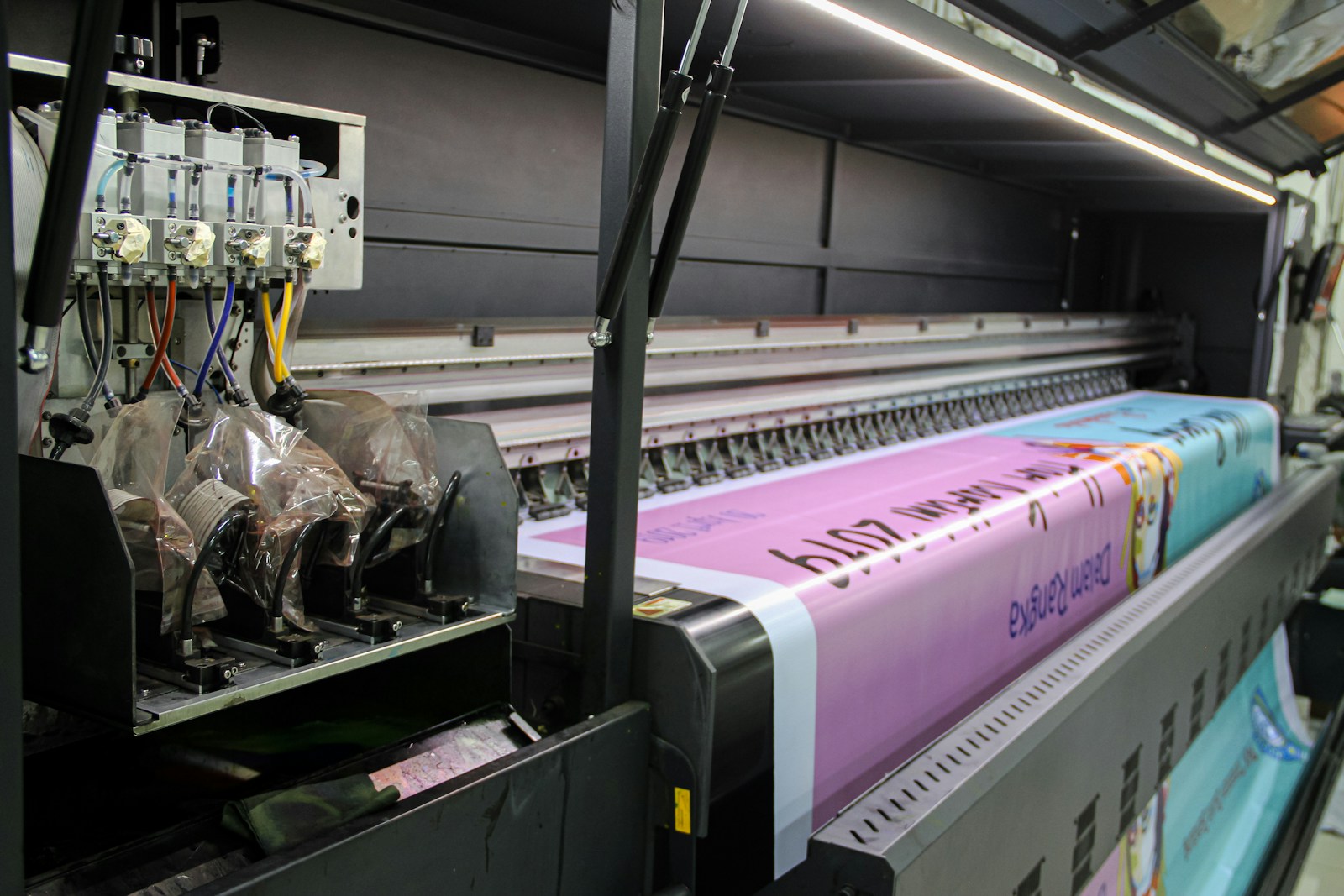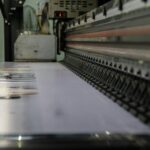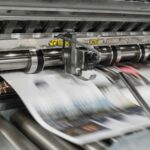The printing industry is undergoing a massive transformation, and it’s being powered by artificial intelligence and automation. What used to be a slow, manual, and often error-prone process is rapidly becoming smarter, faster, and more efficient. We’re no longer talking about vague promises of future innovation—AI is here, and it’s already reshaping everything from how factories operate to how newspapers get laid out.
Across commercial print shops, packaging plants, 3D-printing facilities, and corporate offices, AI and automation are cutting costs, eliminating bottlenecks, and opening up new possibilities for personalized, high-volume output. Let’s break down the latest developments—and what they mean for the future of print.
AI‑Driven Manufacturing & 3D Printing Integration
One of the most impactful moves on the horizon is the creation of dual-use factories supported by AI and 3D-printing. A recent U.S. congressional report calls for a Civil Reserve Manufacturing Network—a system of smart production hubs that could switch from commercial to defense manufacturing when needed. These facilities would rely on AI for everything from logistics to production scaling.
Meanwhile, companies like PostProcess Technologies are addressing a major pain point in additive manufacturing: post-print cleanup. Their AI-driven automation platforms streamline this dirty and time-consuming task, ensuring cleaner, faster, and more repeatable part finishing. This is crucial as 3D printing scales beyond prototyping into full-scale production.
Smart Robots in the Factory: AGVs and AMRs Get Smarter
At Automatica 2025, Siemens unveiled a groundbreaking AI-powered system for autonomous mobile robots (AMRs) and automated guided vehicles (AGVs). The new Operations Copilot enables these machines to plan their paths, avoid obstacles, and operate safely around human workers using adaptive “Safe Velocity” zones.
This kind of real-time AI decision-making is critical for lights-out manufacturing environments where uptime, safety, and precision can’t be compromised. Expect this tech to be a standard in large-scale print production and logistics centers within the next few years.
Office Print & Workflow Automation
AI isn’t just changing how things are printed—it’s also revolutionizing how documents move through offices.
- Toshiba’s Elevate Sky Workflow: This AI-powered cloud platform can read both structured forms and messy handwritten documents, automatically routing them to the right people or systems.
- Vasion’s Print AI Agent (beta): Think ChatGPT, but for your office print setup. Staff can use natural language to manage print queues, detect issues, and implement sustainability initiatives. It’s like having a smart assistant for your entire print infrastructure.
These tools don’t just save time—they reduce manual errors, help ensure compliance, and increase document security. That’s a game-changer for industries like legal, healthcare, and finance.
AI in Prepress, Production, and Web-to-Print
The prepress-to-postpress journey is full of time-consuming, technical steps—but AI is clearing the path.
- Adobe Sensei and HP PrintOS + Nio are being deployed for:
- Preflight checks
- Color accuracy calibration
- Real-time error detection
- Predictive maintenance
- Job scheduling and capacity forecasting
At Dscoop Edge in May 2025, HP unveiled the Nio AI chatbot, which helps operators manage workflows directly inside HP Indigo presses. The system can flag issues, suggest fixes, and even generate insights to improve overall efficiency.
Meanwhile, web-to-print providers like Gelato and OnPrintShop are using AI to auto-generate layouts, select print partners based on real-time capacity, and manage end-to-end fulfillment globally. This is helping small businesses scale like never before.
Media Publishers Are Automating Layouts
Traditional publishing hasn’t been left out of the AI revolution. In Germany, Medienholding Süd is using Sophi.io, a content automation engine, to lay out entire newspapers. It balances editorial judgment with automated formatting—maintaining high design standards while cutting production costs and time.
It’s proof that AI isn’t about replacing creativity—it’s about supporting it by removing repetitive labor.
Research: Autonomous Printing Agents Using LLMs
Researchers are pushing the envelope with LLM-powered printing agents—systems that use large language models like GPT to:
- Monitor 3D prints in real-time for defects
- Dynamically merge and optimize order queues
- Schedule manufacturing jobs for maximum throughput
This kind of AI could eventually enable fully autonomous 3D-printing farms with minimal human oversight, adapting on the fly to new orders, machine downtime, or material constraints.
Summary Snapshot
| Area | Recent Innovations |
|---|---|
| Factory Automation | AI for AGVs, dual-use 3D print hubs |
| Workflow Automation | AI queue management, smart routing |
| Print Production | AI scheduling, predictive color & layout |
| Web-to-Print | Automated layout, fulfillment optimization |
| 3D Printing R&D | LLM-driven defect correction & scheduling |
AI and automation are no longer optional—they’re becoming the backbone of modern print operations. Whether you’re running a print shop, managing office documents, or designing next-gen manufacturing workflows, the question isn’t if you’ll adopt AI—it’s how fast can you catch up?
Key Takeaways
- AI automation cuts through the mess and streamlines print workflows, from job scheduling right down to resource optimization. Fewer errors, faster production.
- Personalization gets a serious upgrade as AI helps create custom print materials that actually connect with people—not just generic flyers.
- Print businesses that embrace AI now? They’re setting themselves up for a real edge and better growth down the road.
The Role of AI and Automation in Modern Printing
AI and automation have honestly shaken up the printing industry, opening doors for more efficiency and fresh ideas. These technologies impact everything—initial design, final production, you name it—helping print shops keep up with today’s demands while keeping costs in check.
Transforming Print Workflows
AI-driven algorithms are now running the show for print workflows, slashing the need for people to babysit every step. Automated systems are handling scheduling, prepping files, and even setting up the press—stuff that used to eat up tons of time.
Smart workflow solutions can shuffle jobs around based on deadlines, what materials are on hand, and which machines are free. This kind of scheduling keeps things humming and maximizes productivity.
Digital dashboards let operators keep an eye on every stage, spotting bottlenecks before they turn into real problems.
Plenty of print shops have seen throughput jump 10-30% after bringing in AI workflow systems. Most of that comes from ditching repetitive tasks and cutting down on human slip-ups.
Enhancing Print Quality and Consistency
AI vision systems are inspecting prints at speeds no human can match, catching defects down to a few microns. They compare every print to digital standards, making sure everything looks right.
Machine learning keeps getting better, analyzing thousands of samples to spot patterns in print quality.
Key Quality Improvements:
- Auto color calibration on all sorts of substrates
- Real-time tweaks to print heads based on feedback
- Predictive maintenance that heads off quality issues
- Consistent results across different machines and runs
Most modern setups can make tiny adjustments on the fly, fixing problems without stopping the presses.
Optimizing Resource Management
AI is a champ at cutting waste, which, let’s face it, is huge for keeping print shops profitable. Smart systems figure out the most efficient way to use materials, dropping paper waste by 8-15% in a lot of shops.
Predictive algorithms can even forecast what materials you’ll need for upcoming jobs, so you’re not running short or drowning in extra inventory.
Energy use drops, too, since AI manages equipment so that non-essential stuff powers down during breaks. Operational settings get tweaked for efficiency.
Automated maintenance scheduling means machines get serviced right when they need it—not just because the calendar says so. That stretches equipment life and heads off nasty breakdowns.
And with supply chain software tied to vendors, materials get reordered automatically at the best price when inventory dips.
Key AI Applications in the Printing Industry
Right now, the printing industry’s in the middle of a tech revolution, with AI streamlining just about every process you can think of. It’s not just hype—AI is really making a difference, from the first design tweaks to the final quality checks.
Automated Prepress and Layout Design
AI-powered prepress systems can now spot and fix issues that used to suck up hours of manual work. They’ll catch color problems, low-res images, font errors—basically, all the annoying stuff—before it ever hits the presses.
Smart layout algorithms squeeze multiple jobs onto a single sheet, cutting down waste and slashing costs. Some of the fancier systems even suggest design tweaks based on what’s worked before.
When it comes to packaging design, AI tools can predict how things will fold and assemble in 3D, flagging weak spots before production starts.
With this kind of automation, prepress prep time has dropped by up to 70% in some print shops, freeing up staff for more creative or complex stuff.
Predictive Maintenance for Printing Equipment
AI keeps an eye on printing equipment in real-time, tracking everything from performance to temperature swings and wear patterns. It’s a bit like having a mechanic living in your machines.
Machine learning digs through breakdown histories to predict when parts are about to fail, which means fewer surprise repairs and less downtime.
Some systems even go ahead and order replacement parts as soon as they spot warning signs.
Smart sensors sprinkled throughout the equipment track ink viscosity, roller pressure, and other critical details. These feed info to AI systems that make tiny tweaks to keep print quality on point.
AI-generated maintenance schedules can stretch equipment life by 15-30%—which is nothing to sneeze at for print shops watching their budgets.
Variable Data Printing and Personalization
AI makes it possible to swap out text, images, and designs for each printed piece, so mass customization is finally a reality. Personalized marketing materials aren’t just for the big guys anymore.
Natural language processing helps whip up content that actually feels personal for different audience segments. AI chews through customer data to figure out what messaging will hit home.
These systems can tweak color schemes, images, and layouts based on who’s getting the piece or what they’ve bought before. Some shops have seen response rates jump by up to 50% thanks to this level of personalization.
For direct mail, AI tools can predict which personalization tricks will bring the best results, and they keep learning from each campaign to get even better next time.
Image Recognition and Quality Control
AI vision systems are scanning printed materials at lightning speed, catching defects nobody would ever notice. They can spot misalignments as tiny as 0.1mm while flying through hundreds of sheets a minute.
Machine learning gets sharper over time, learning the difference between real defects and harmless quirks.
AI-powered color management keeps colors consistent across machines and materials, automatically adjusting ink density and balance to match the specs.
For packaging, AI checks barcodes, scans for typos, and makes sure everything is up to code, cutting the risk of recalls or compliance headaches.
These vision systems are now built right into production lines, so they can make real-time corrections and cut waste from bad prints by up to 40%.
Impact on Business Operations and Workforce
AI and automation are shaking up how printing businesses run and how they manage their teams. These changes touch everything—from day-to-day production to big-picture planning and what employees actually do on the job.
Streamlining Production Processes
AI algorithms are running entire print workflows now, making operations smoother than ever. Modern print shops rely on automated systems for job scheduling, resource allocation, and quality control, all with barely any human input.
These smart systems can spot maintenance needs before things break down, slashing surprise downtime. They also batch and sequence jobs for max throughput and minimal waste.
AI tech means real-time monitoring, with instant tweaks to keep quality steady. Less rework, fewer headaches, and customers get exactly what they ordered.
Plenty of print shops have seen production speed jump by 25-40% after adding AI to their workflows—so they can handle more jobs without needing more space or machines.
Reducing Operational Costs
Bringing in AI can really shrink costs across the board. Smart resource management systems cut material waste by 15-30% with precise calibration and smarter usage.
Energy bills drop as AI figures out the most efficient way to run equipment. Predictive maintenance catches problems early, so you’re not shelling out for major repairs or tossing out expensive machines too soon.
Labor costs shift, too—automation takes over the boring stuff, so people can focus on higher-value work. Some print shops have cut overall operational costs by 20-35% within just a couple of years.
Inventory headaches ease up, too, since AI forecasts material needs based on upcoming jobs, helping avoid both overstock and last-minute scrambles.
Adapting Workforce Roles and Skillsets
The print workforce is changing, no doubt about it. As machines handle routine tasks, operators are turning into system monitors and troubleshooters, not just button-pushers.
New jobs are popping up—think AI system managers, data analysts, and advanced customer service roles. It’s a shift, sure, but it’s also a chance for people to pick up new, more valuable skills.
Training is getting more technical, focusing on data, software, and process optimization. Many print shops are teaming up with tech schools to build new programs for these skills.
Despite worries about job losses, most shops are seeing people move into new roles rather than getting replaced outright. Employees are taking on more strategic and creative work, which, honestly, isn’t such a bad trade.
Future Trends and Challenges in AI-Driven Printing
With AI tech moving so fast, the printing industry’s in for some big changes. There’s a lot to be excited about, but it’s not all smooth sailing—there are definitely some bumps ahead for businesses trying to keep up.
Integration with IoT and Smart Factories
Smart factories are the next big thing for printing tech. Printers will be hooked into networks of sensors and devices, making manufacturing way more responsive and adaptable.
Imagine printers talking to inventory systems and ordering supplies before you even realize you’re running low. That kind of foresight could almost eliminate downtime and make resource use way more efficient.
Data from all these IoT-connected systems will feed into analytics, giving managers insights for constant improvement. You’ll get alerts about maintenance or production hiccups right on your phone—no need to be glued to the shop floor.
By 2026, a lot of print shops might run with barely any human supervision, as equipment coordinates tasks automatically, learning from the past to keep things humming.
Emerging AI Technologies in Printing
Machine vision is about to change quality control in a big way, spotting flaws that nobody else could catch. These systems will scan printed stuff at blazing speeds, cutting waste and keeping output solid.
Natural language processing could let people just say what they need, and AI will figure out the specs and how to get it done. Wouldn’t that be something?
Key AI Technologies Transforming Printing:
- Predictive maintenance that actually works
- Auto content formatting and design optimization
- Smart color management and correction
- Workflow intelligence for smarter job prioritization
Recommendation engines will help clients pick the right materials and production methods, weighing cost, durability, eco-friendliness, and deadlines.
Overcoming Implementation Barriers
Cost is still a big hurdle for smaller print shops. Upfront investments in AI gear aren’t cheap, though modular solutions are starting to make it easier to dip a toe in before diving all the way.
Training people to work with AI takes planning, too. The smart move? Invest in building skills that work with automation, not against it.
Data privacy is a real concern, especially since print jobs can have sensitive info. Shops will need solid security and clear policies about how AI uses customer data.
And let’s not forget legacy equipment—lots of shops can’t just toss everything and buy new. Integration platforms that help old machines talk to new AI systems will be key for those not ready for a total overhaul.
Frequently Asked Questions
Printing is changing fast with AI and automation. These technologies are shaking up workflows, boosting quality, and opening up new possibilities for print businesses.
How is artificial intelligence revolutionizing the printing industry?
AI is turning printing on its head by automating complex tasks. It can analyze designs, catch errors, and fix them—no humans needed.
Personalization is getting way more advanced, too. AI can build variable data printing solutions for each customer, making mass customization actually doable (and fast).
AI-powered predictive maintenance keeps equipment running smoother by spotting issues before they turn into disasters. That means less downtime and longer-lasting machines.
What are the benefits of automation for print production workflows?
Automation wipes out a lot of human error in print production. Digital workflows catch mistakes early, saving time and materials.
Production speeds go way up as automated systems handle the repetitive stuff. Jobs that used to take days? Now they’re done in hours.
Resource allocation gets a boost, too, as software tracks material use and schedules jobs to cut waste. It’s good for the bottom line and the planet.
In what ways can AI-based systems enhance digital printing quality and accuracy?
AI color management systems are actually pretty good at keeping output consistent—even when you’re switching between different materials or printers. They’ll tweak settings on the fly, taking into account stuff like humidity or temperature swings that you might not even notice.
Then there are image enhancement algorithms, which can breathe new life into low-res images or fix annoying issues like red-eye and washed-out contrast. That alone can make a printed piece look way more professional, or at least less disappointing.
And let’s not forget print defect detection powered by AI. These systems spot flaws—like streaks, banding, or weird registration problems—as they happen, not after you’ve wasted a whole batch. That’s a relief, honestly.
What are the implications of AI and automation on employment within the printing sector?
Printing jobs aren’t just vanishing—they’re changing shape. You’ll see more folks moving from hands-on, manual work to keeping an eye on (and fixing) automated systems.
There’s a growing need for people who can handle data analysis, manage AI platforms, or even build custom solutions. It’s a different skill set than what’s been standard in print shops for decades.
Training has become a must-have, not a nice-to-have. Companies are scrambling to help their teams keep up, and if you know both printing and tech? You’re golden.
How are printing companies integrating AI technologies to improve efficiency and reduce costs?
A lot of print businesses kick things off with workflow automation. They link up design, prepress, and production so you don’t waste time passing files around or waiting for someone to hit “go.”
Then you’ve got smart scheduling tools. These use AI to juggle jobs based on deadlines, what materials are on hand, and which machines are free. It’s a bit like Tetris, but with print jobs—and it squeezes more out of every workday.
On the customer side, AI-powered quoting and design assistants have started to take over the routine stuff. They cut down on paperwork, speed up replies, and let staff focus on more interesting problems.
What challenges and considerations do businesses face when adopting AI-driven solutions in printing?
Let’s be honest—implementation costs can be a real hurdle, especially if you’re running a smaller print shop. It’s not just a matter of buying some shiny new software; there’s a lot of math and second-guessing involved in figuring out if the investment will actually pay off.
Then there’s the headache of trying to get new AI systems to play nice with old-school equipment. Some legacy printing presses just don’t want to cooperate, and retrofitting or replacing them isn’t always straightforward (or cheap).
As more of the printing workflow goes digital, data security jumps to the top of the priority list. Suddenly, you’re not just worrying about ink and paper—you’re tasked with keeping customer data and proprietary designs safe from prying eyes. That means new protocols, more training, and probably a few sleepless nights.
And let’s not forget the human element. Not everyone is thrilled about new tech swooping in. It’s common for staff to feel uneasy or even resistant. So, it’s crucial to communicate openly and show how AI is meant to help—not replace—people. Change management isn’t just a buzzword here; it’s survival.







